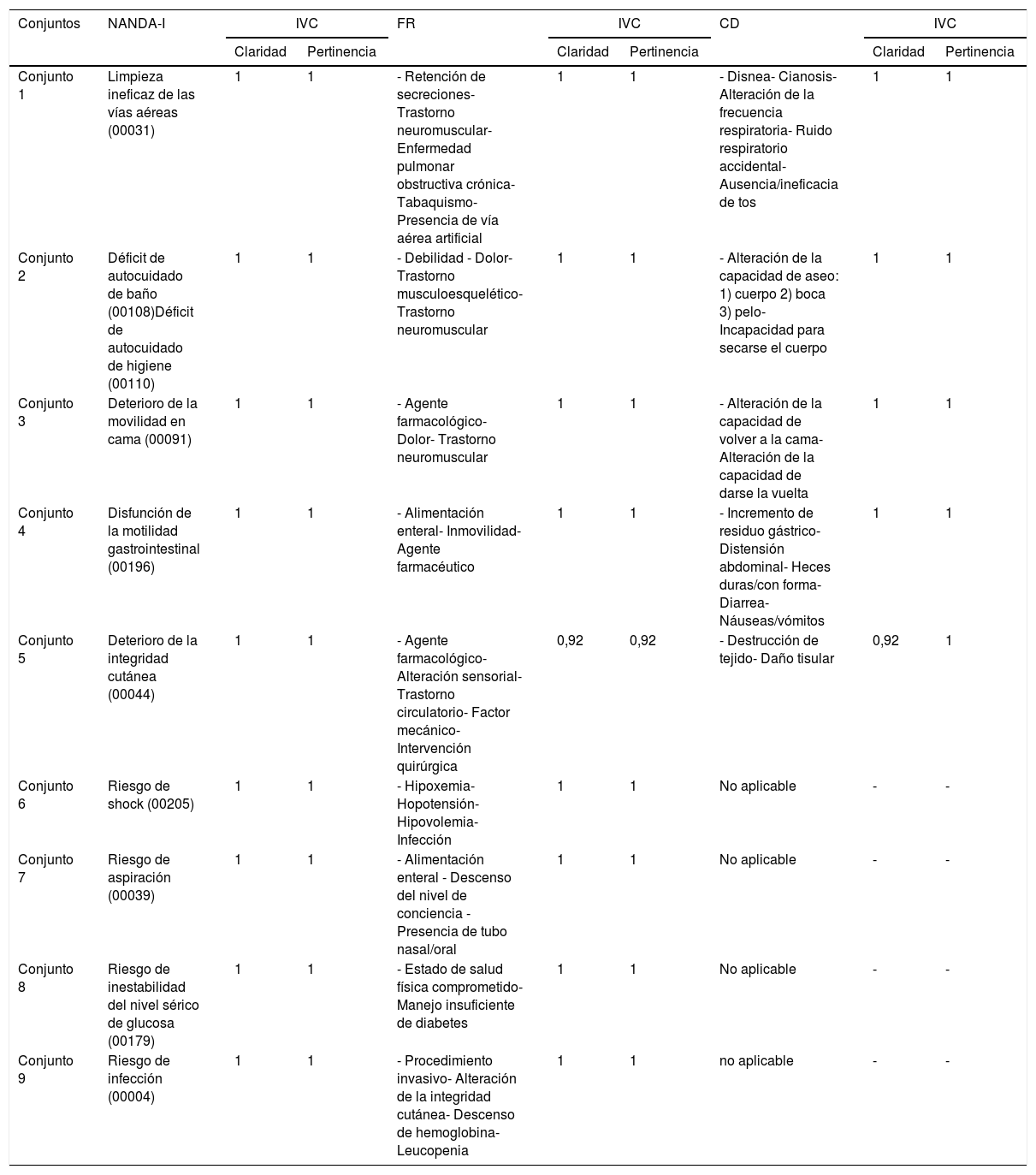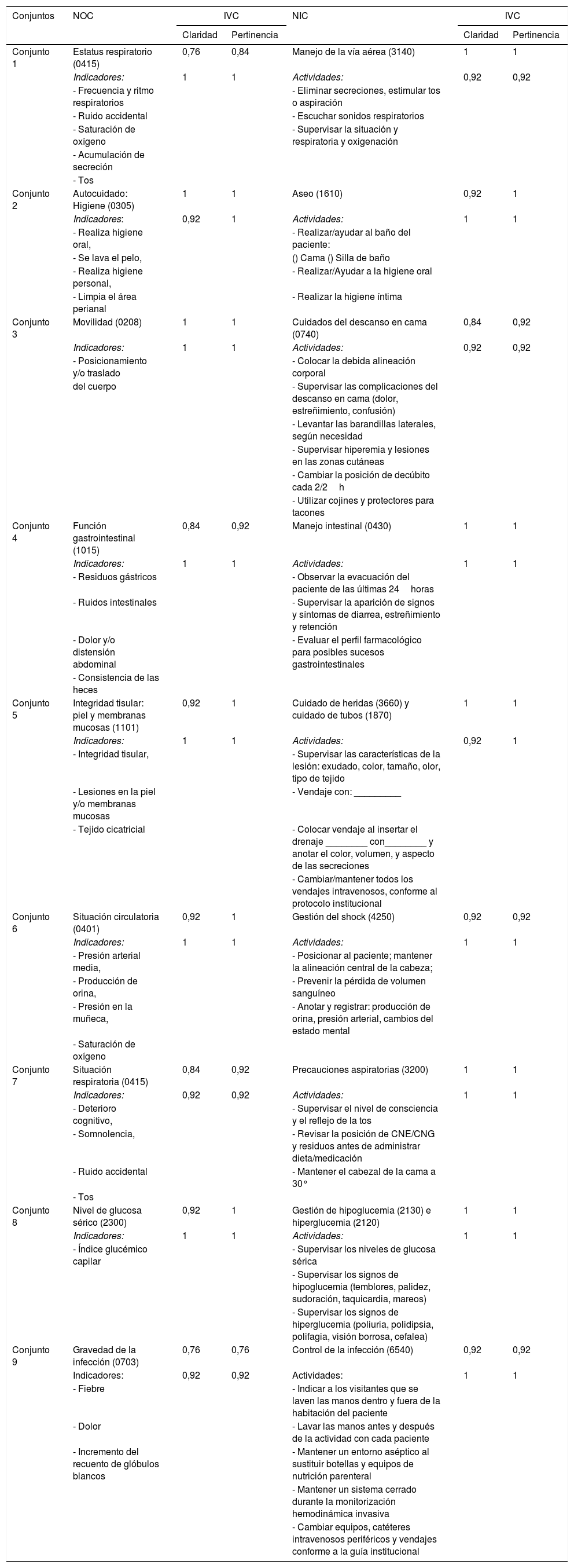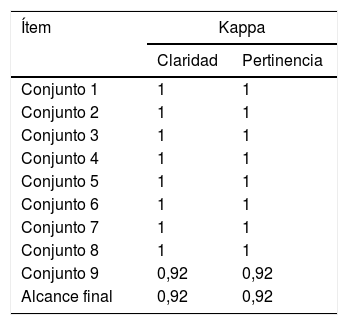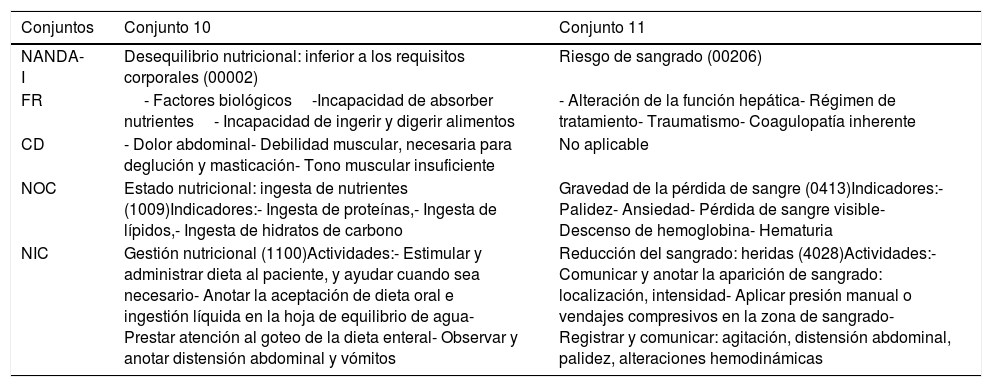Validar el contenido de un instrumento para la documentación de las etapas del proceso enfermero, utilizando los sistemas de lenguaje de NANDA-I, NOC y NIC, considerando los pacientes hospitalizados en una unidad de cuidados intensivos.
MétodoInvestigación metodológica realizada en 3 etapas: diseño del instrumento existente a partir de los sistemas NANDA-I, NOC y NIC; validación de contenido por 13 jueces a partir de una escala tipo Likert de 4 puntos, evaluando los ítems en cuanto a claridad y pertinencia; aplicabilidad: opinión de 40 enfermeros asistenciales sobre el contenido respecto a la claridad, facilidad de lectura y presentación. Se calculó el índice de validez de contenido y el coeficiente de Kappa para medir la proporción de relevancia y claridad, así como para verificar el nivel de concordancia entre especialistas en cada ítem.
ResultadosSe consideró el instrumento claro y pertinente, con índice de validez de contenido por encima de 0,8 en la mayoría de los ítems, e índice de concordancia global de 0,90, evidenciando un nivel satisfactorio de concordancia entre los jueces. En cuanto a la aplicabilidad se consideró el instrumento claro, de fácil lectura y con presentación adecuada por la mayoría de los enfermeros asistenciales, siendo validado a través de 11 diagnósticos con sus respectivos resultados e intervenciones de enfermería.
ConclusiónEl instrumento ha demostrado ser válido y aplicable para el grupo estudiado. Se espera que este estudio contribuya a la mejora del proceso enfermero en cuidados intensivos.
to validate the content of an instrument for documenting the steps of the Nursing Process, using the standardized languages NANDA-I, NOC, and NIC (NNN), aiming at hospitalized patients in an Intensive Care Unit (ICU).
MethodA methodological research performed in three steps: design of the existing instrument from the systems NANDA-I, NOC and NIC; content validation by 13 judges, from a four-point Likert-type scale – items were evaluated as to their clarity and pertinence; applicability: judgement of the content regarding clarity, reading ease, and presentation for 40 critical-care nurses. The Content Validity Index (CVI) and the Kappa coefficient (k) was calculated to measure the proportion of relevance and clarity, was well as to verify the level of agreement between the experts in each item.
ResultsThe instrument was considered clear and pertinent, with CVI above 0.8 in most items and overall Concordance Index (CI) of 0.90, showing a satisfactory level of agreement between judges. Regarding applicability, the instrument was deliberated clear, of easy reading, and with proper presentation by most critical-care nurses, being validated through 11 diagnoses with their respective results and nursing interventions.
ConclusionThe instrument showed to be valid and applicable for the group studied. It is expected that this study is able to contribute to the improvement of the Nursing Process in intensive care.










